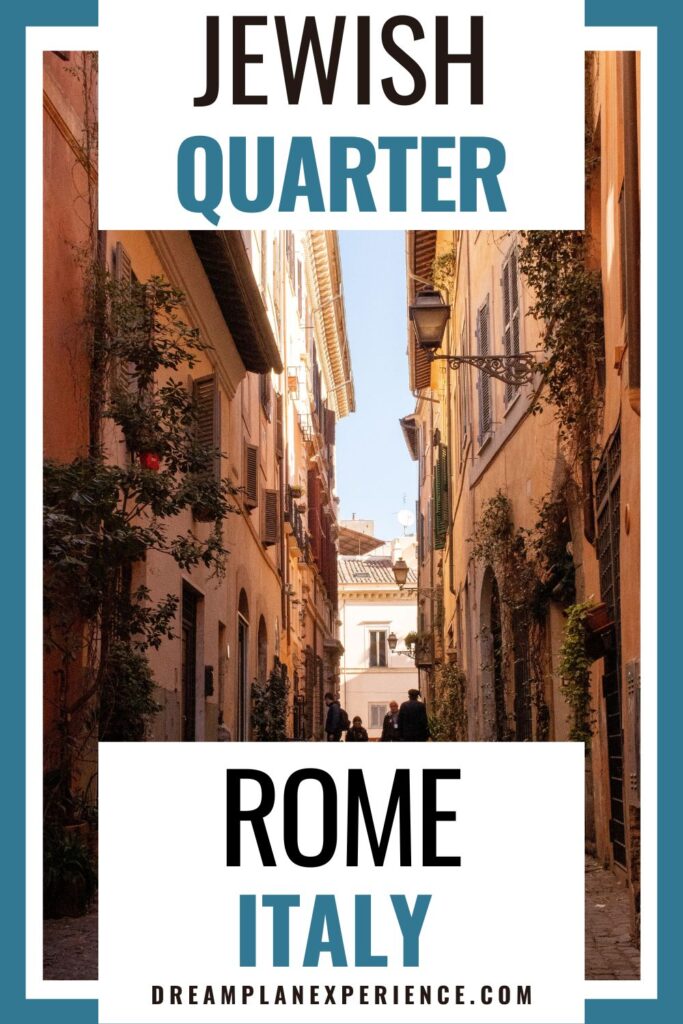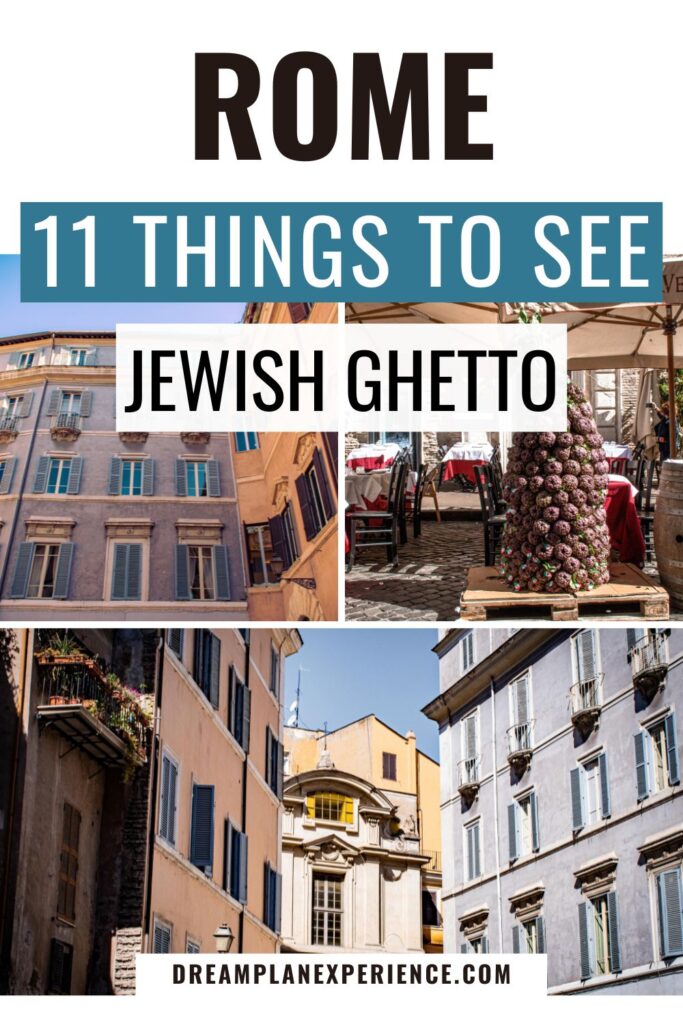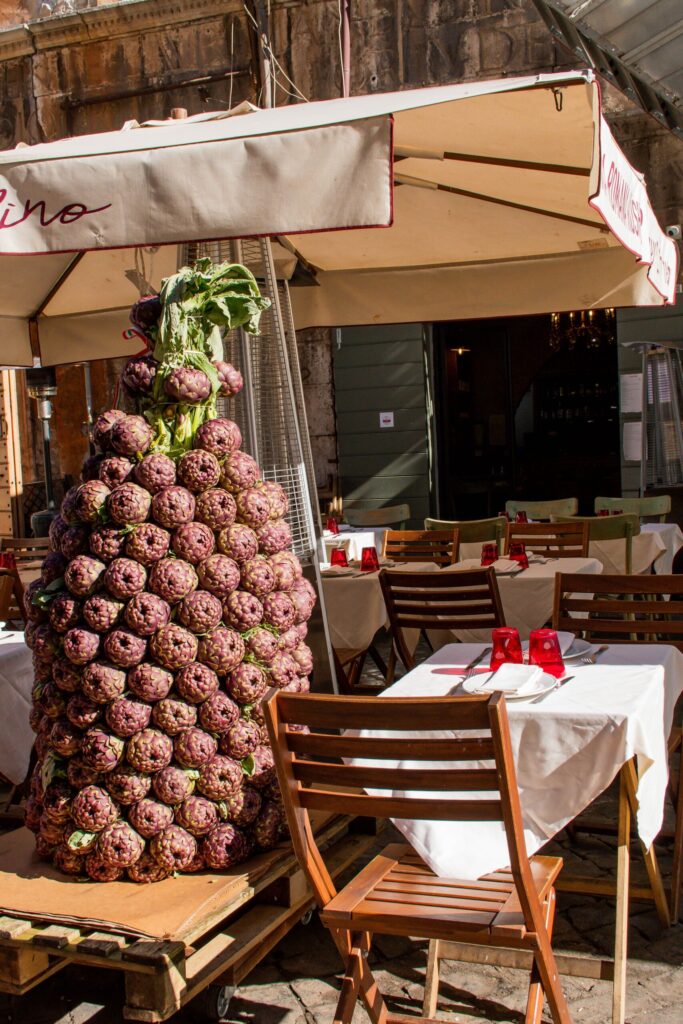The Jewish Ghetto in Rome: 11 Ghetto Sites to See
The Jewish Ghetto in Rome is a neighbourhood steeped in history and culture that is sure to captivate any curious traveller.
As one of the oldest Jewish communities in the world, the Jewish Ghetto of Rome dates back to the 2nd century BC.
As you wander through the winding streets, you’ll encounter stunning architecture and delicious cuisine.
But this neighbourhood is much more than just a tourist destination – it’s a place where the past is alive and the present is constantly evolving.
Wondering what to see in the Jewish Ghetto in Rome?
This small Jewish area in Rome is packed with beautiful historical sites and I will share it all from squares, streets, synagogues, fountains and more.
Learn about its history and culture, and most importantly its food!
Table of Contents
This post may contain affiliate links. If you click on an affiliate link, at no additional cost to you, I will earn a small commission if you decide to book. Please check out my privacy policy and disclosure for more information.
Is the Jewish Quarter of Rome Worth Visiting?
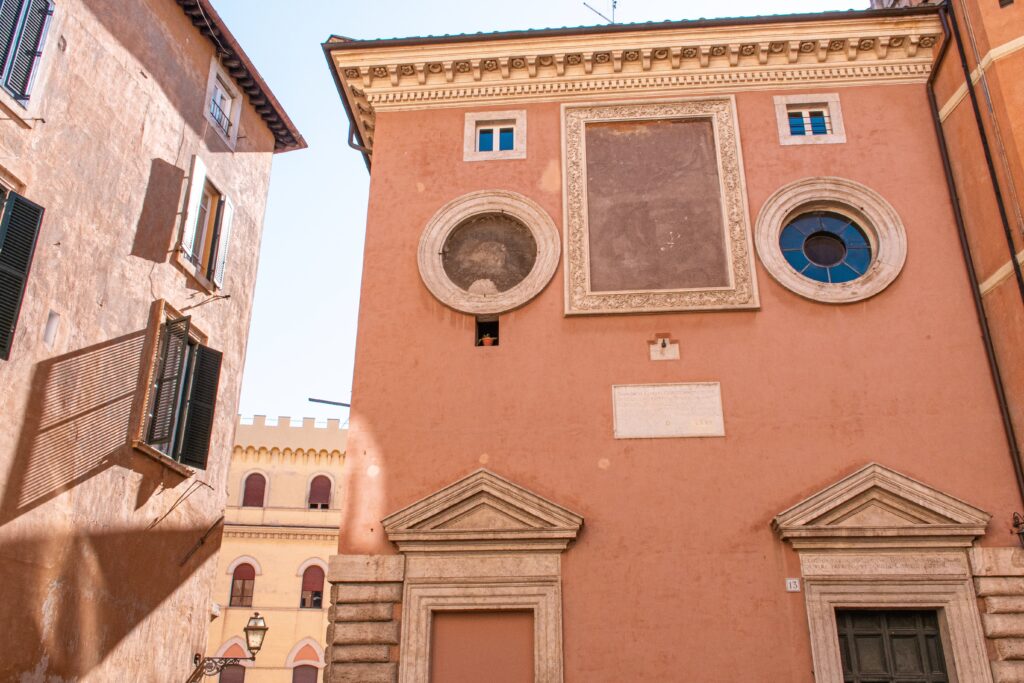
Absolutely! The Jewish section of Rome Italy is a unique and fascinating neighbourhood that is definitely worth visiting.
Visitors to the Jewish Ghetto can explore ancient synagogues, admire stunning architecture, sample delicious kosher cuisine, and learn about the history and traditions of the Jewish community in Rome.
The neighbourhood also has a lively and vibrant atmosphere, with bustling markets and restaurants.
Rome Jewish Ghetto History
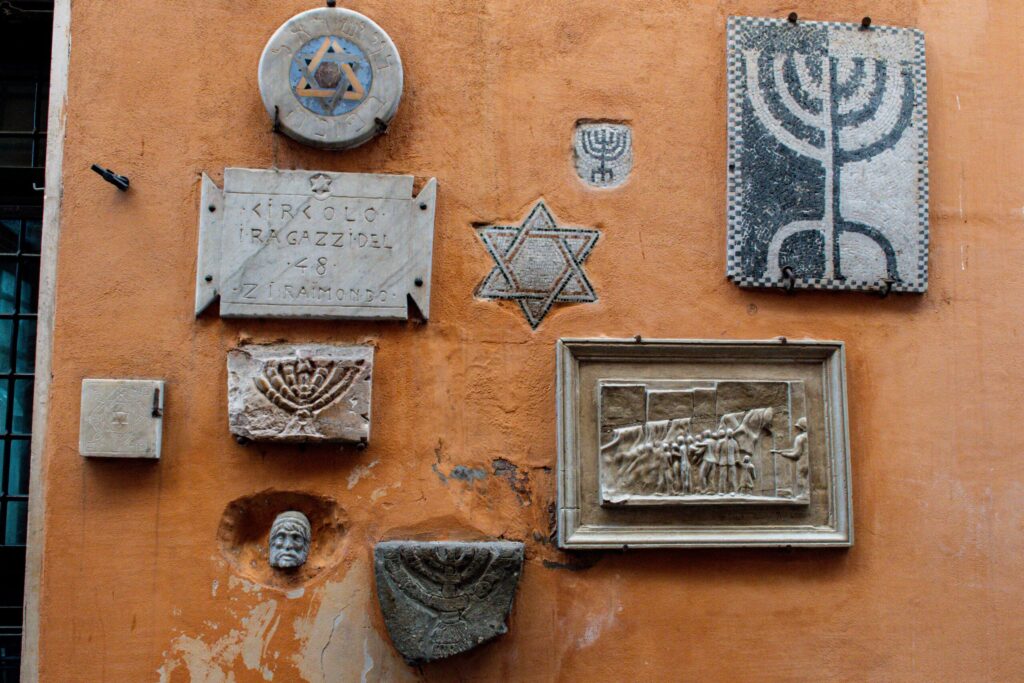
Another reason the Roman Jewish Quarter is worth visiting is it’s one of the oldest Jewish communities in the world.
The Roman Jewish Ghetto has a long and complex history that spans over two thousand years. It was established in the early 16th century when Pope Paul IV ordered all Jews in Rome to live in a designated area near the Tiber River.
The area was overcrowded, with poor living conditions and limited access to resources. However, despite the challenges, the Jewish community thrived, and the ghetto became a hub of Jewish life and culture.
Over time, the restrictions on Jewish residents were gradually lifted, and the ghetto was finally abolished in 1870.
Today, the Jewish Ghetto is a vibrant and thriving neighbourhood that is one of my favourites to visit every time I’m in Rome.
The Best Way to See the Jewish Ghetto in Rome
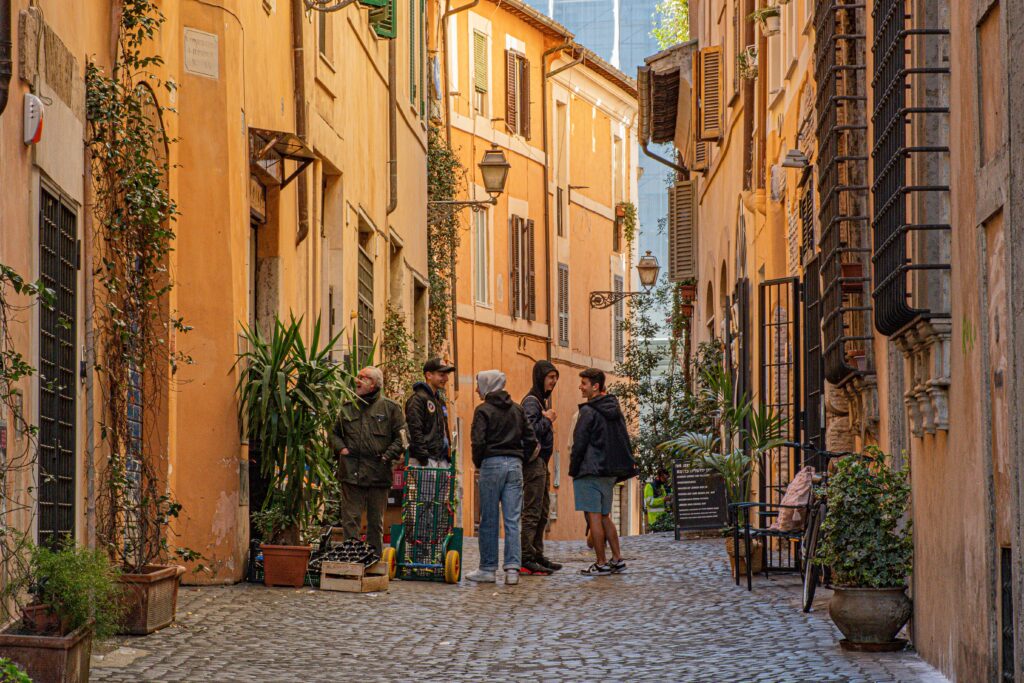
Are you interested in learning about Rome’s Jewish neighborhood?
A small group guided tour of the Jewish Ghetto will provide you with unique insights into the fascinating history of the Jewish community in Rome. Learn how Rome’s Jewish Quarter has influenced the city’s culture, art, and cuisine from knowledgeable guides.
Here are the top-rated tours.
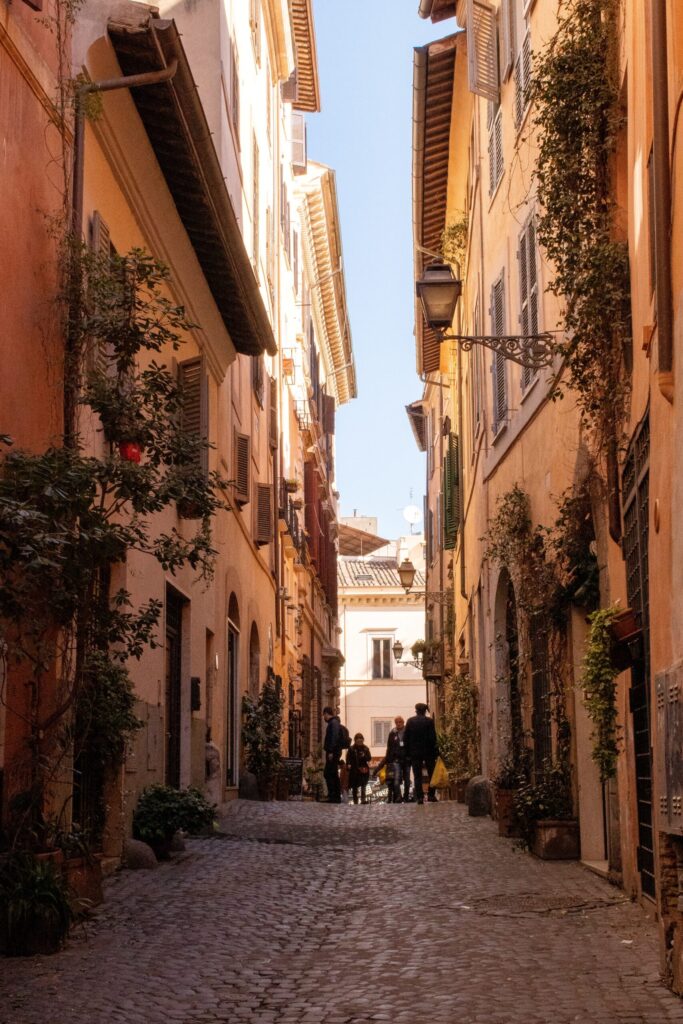
⭐️⭐️⭐️⭐️⭐️
Jewish Ghetto Walking Tour (2 Hours)
✅ Knowledgable local guides
✅ Stories, and insights not shared in guidebooks
✅ Visit the famous sites and landmarks
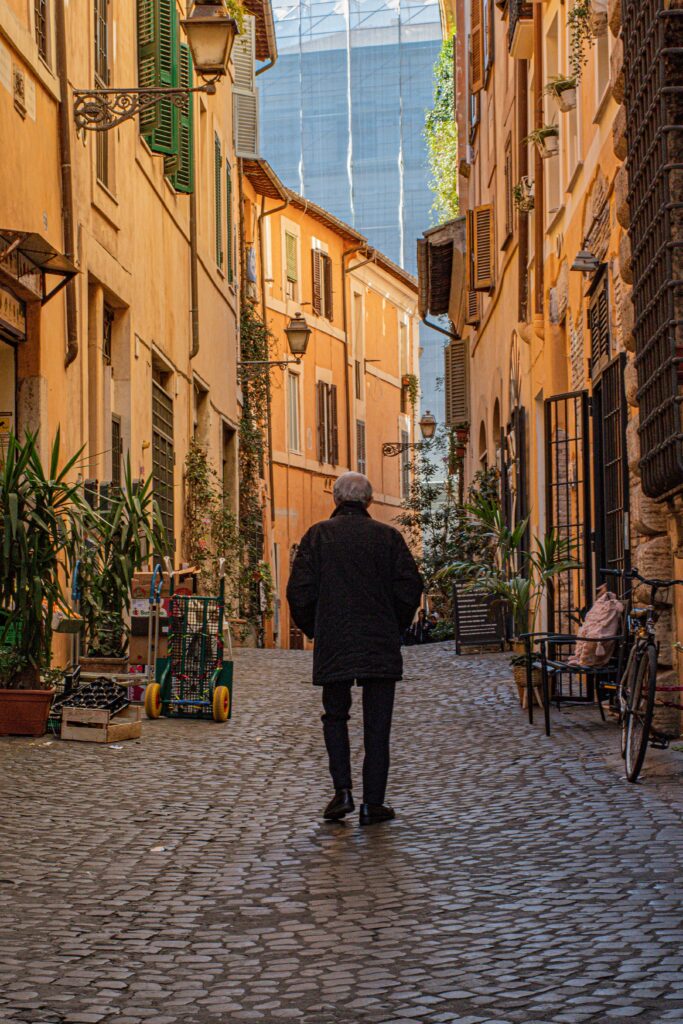
⭐️⭐️⭐️⭐️⭐️
Trastevere & Jewish Rome Walking Tour (3 Hours)
✅ Local Jewish guide
✅ Visit 2 of Rome’s best neighbourhoods
✅ See the origins of the Jewish community in the Trastevere
11 Best Things to See in the Jewish Quarter Rome
1. The Synagogue – Tempio Maggiore (La Sinagoga)
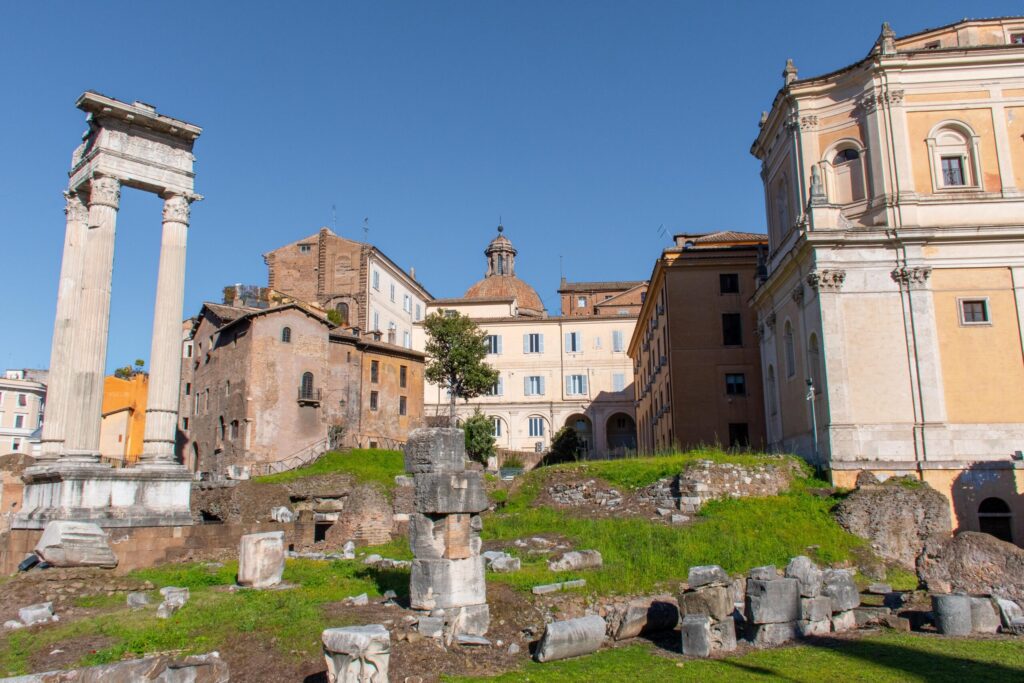
The Synagogue is a must-see site when exploring the Rome Ghetto.
It’s an impressive structure, built in the late 19th century in a blend of styles that reflects the diverse cultural influences of the time. Its distinctive dome, made of copper and decorated with colourful frescoes, is a highlight not to be missed.
Did you know that the synagogue was once the site of a daring rescue during World War II when the Jewish community was at risk of being rounded up and sent to concentration camps? Thanks to the courageous actions of a local priest and a group of nuns, many Jewish families were hidden and protected in the synagogue’s basement until the end of the war.
The synagogue today serves as a center for Jewish life in Rome, hosting religious services, cultural events, and educational programs in its Jewish Museum.
📍 Lungotevere de Cenci
2. Octavia’s Patio (Portico d’Ottavia or Porticus Octaviae)
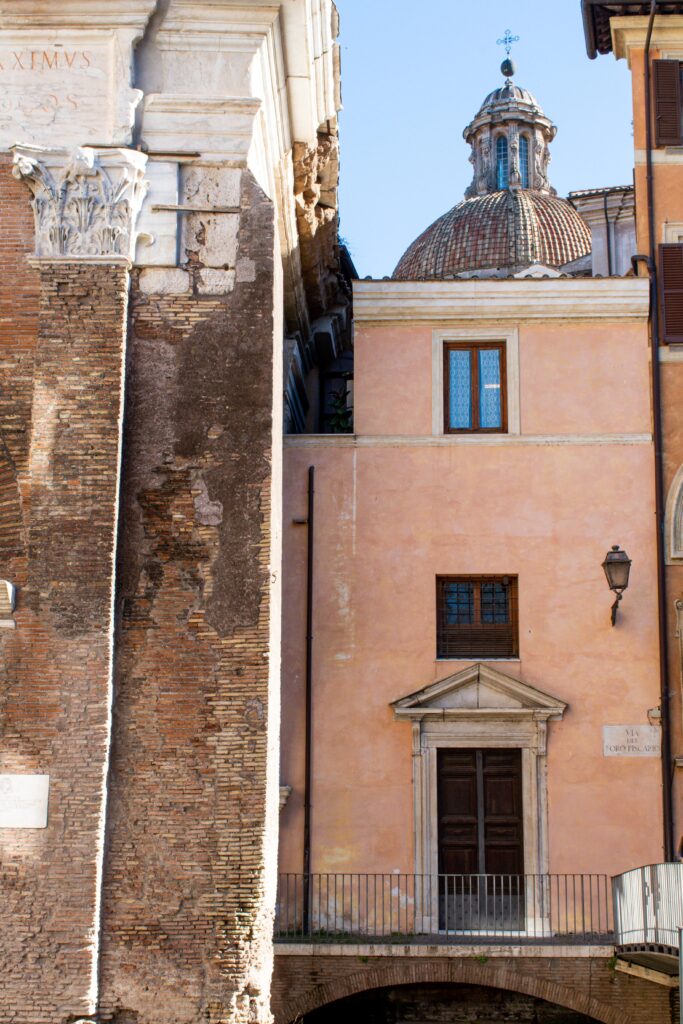
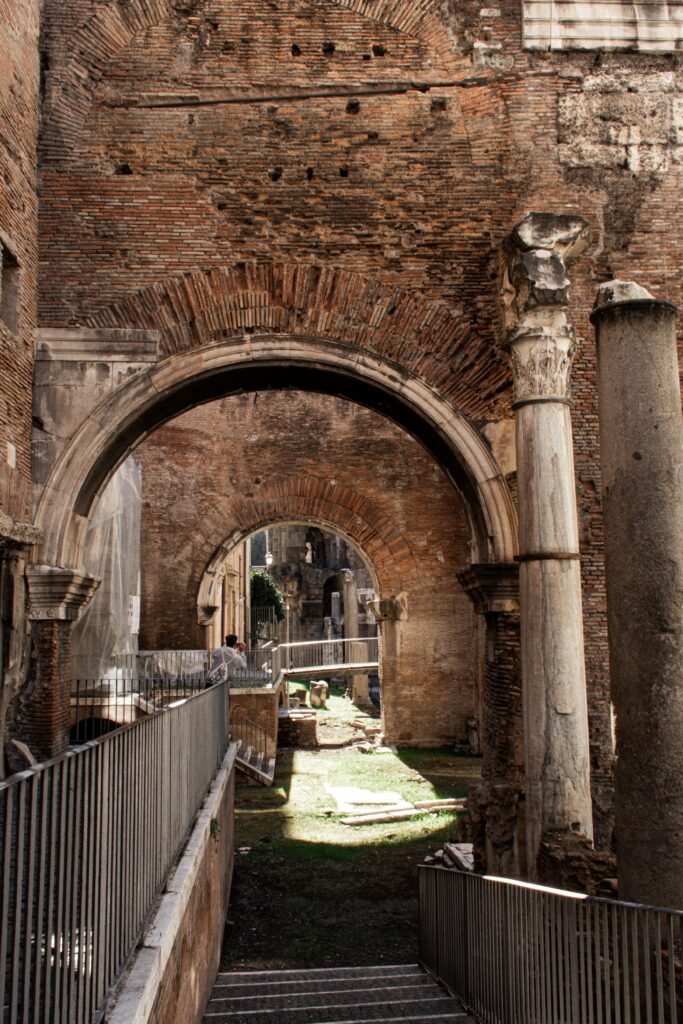
Octavia’s Patio, also known as Portico d’Ottavia or Porticus Octaviae, is a beautiful and historic site located in the Jewish Ghetto of Rome.
Built in the 1st century BCE, the original structure was a grand public building that served as a market, shopping center, and gathering place for the citizens of ancient Rome.
Today, the ruins of the Portico d’Ottavia feature several impressive columns, and arches, as well as a beautiful courtyard that’s surrounded by charming cafes, shops, and restaurants.
📍 Portico d’Ottavia, 29
3. Marcello’s Theatre (Teatro Marcello)
Marcello’s Theatre, or Teatro Marcello, is an impressive ancient Roman theatre that often gets mistaken for the Colosseum.
Built in the 1st century BCE, the theatre was originally designed to hold up to 20,000 spectators, making it one of the largest and most important entertainment venues in the city.
Later it was converted into a fortress by the noble Orsini family. The Theatre sits adjacent to Octavia’s Patio and despite being damaged and partially destroyed over the centuries, the theatre still retains much of its original beauty and grandeur.
📍 Via del Teatro di Marcello
4. Via Del Portico D’Ottavia
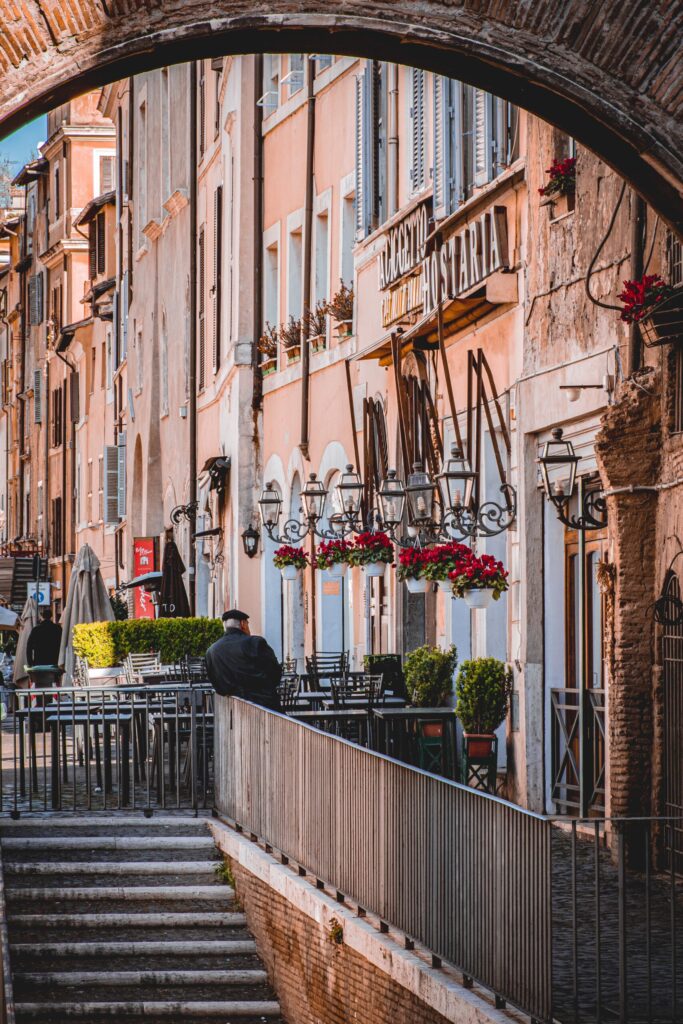
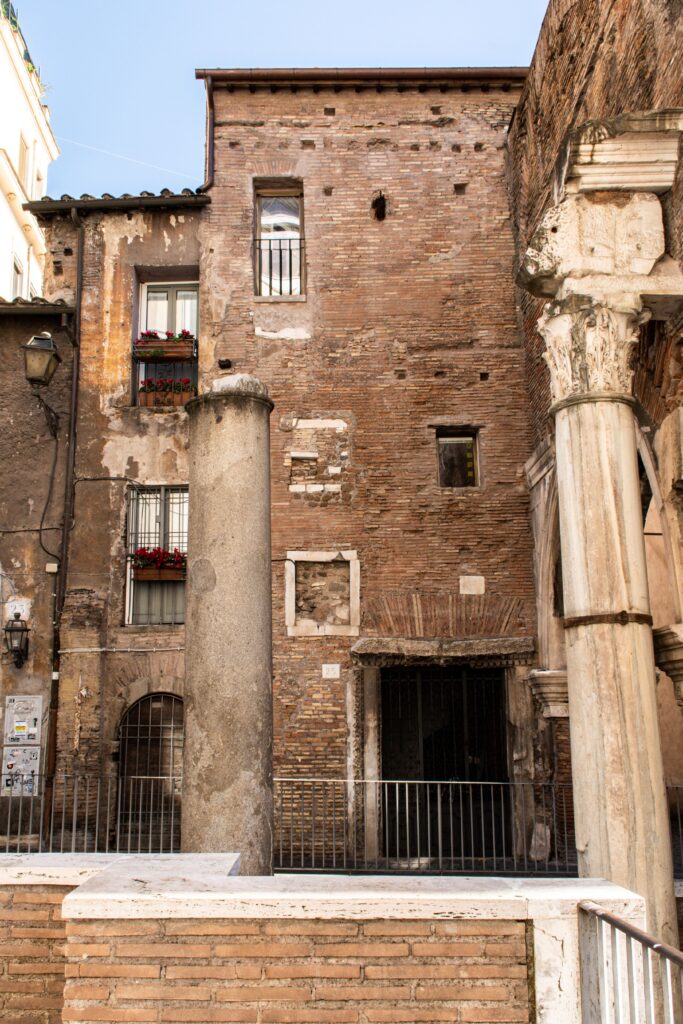
Via del Portico d’Ottavia is a historic street that runs through the heart of the Jewish Ghetto in Rome.
Named after the ancient Porticus Octaviae, this main street is now home to some charming cafes, restaurants, and shops, and a great place to simply soak up the atmosphere of this vibrant neighbourhood.
📍Via del Portico d’Ottavia | Portico d’Ottavia
5. Turtle Fountain (Fontana Delle Tartarughe)

The Turtle Fountain, or Fontana delle Tartarughe, is a beautiful and unique fountain from the 16th century.
It features a charming design of four bronze turtles supporting a basin of water, surrounded by graceful sculptures and intricate decorations.
The fountain is widely regarded as one of the most charming and picturesque in Rome, and I have to agree!
📍 Piazza Mattei
6. Palazzo Mattei
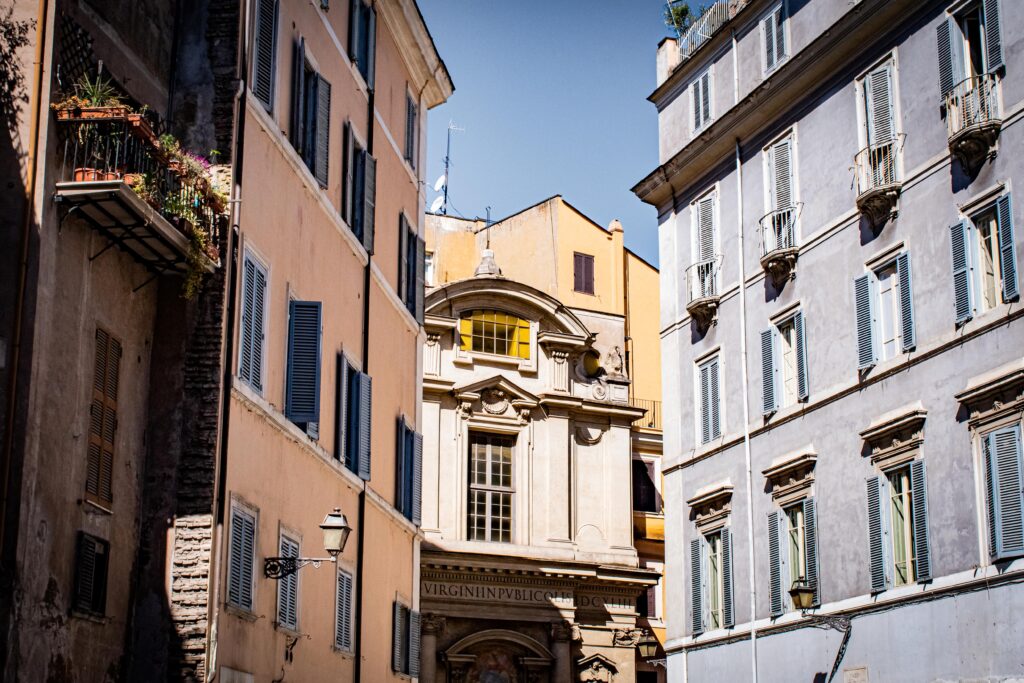
Palazzo Mattei is a magnificent 16th-century palace renowned for its stunning Renaissance architecture and beautiful artwork. It’s often missed by tourists.
From the Turtle Fountain, look for an archway on the square and this will lead you to the palace. The palace’s interior is decorated with exquisite frescoes and sculptures, while its gardens offer a peaceful retreat.
One of the palace’s most notable features is the grand staircase, which is considered one of the finest examples of Baroque architecture in Rome.
📍 Via Michelangelo Caetani, 32
7. Carmelo Temple (Tempietto del Carmelo)
Tempietto del Carmelo is a small but beautiful 17th-century shrine built by a local family to protect the image of Santa Maria del Carmine outside of their home.
This tiny temple of travertine columns and wrought iron grills and gates now just blends into the ancient architecture that surrounds it.
📍 Piazza Costaguti, 18
8. Piazza delle Cinque Scole
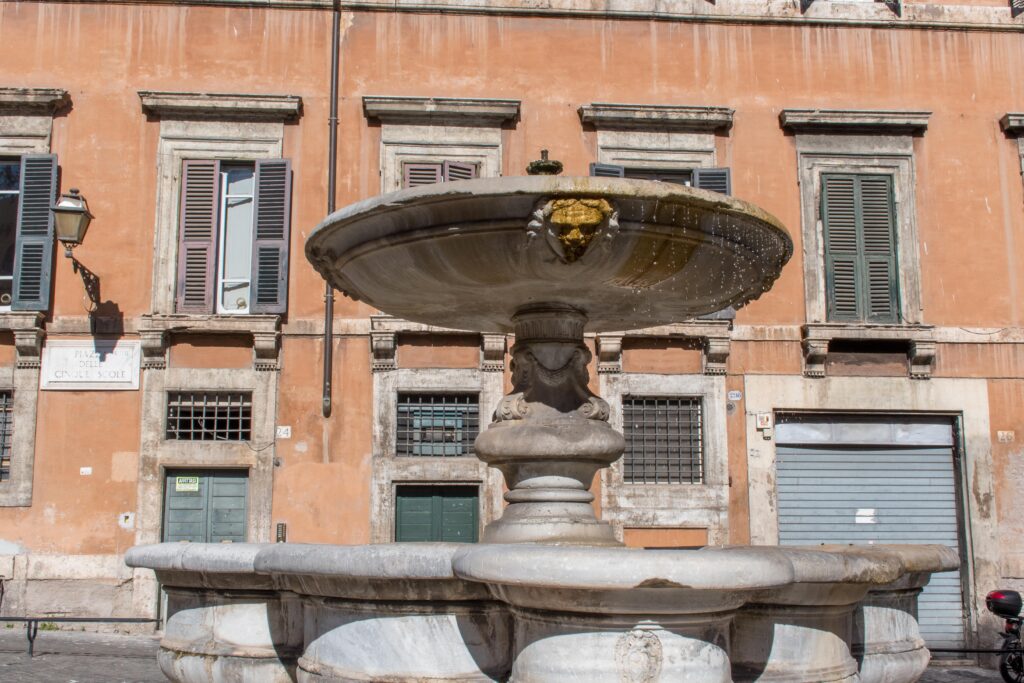
Piazza delle Cinque Scole, or the “Square of the Five Synagogues,” is a historic square that takes its name from the five synagogues that once stood in the area.
Although only one of them, the Tempio Maggiore, remains today, along with a lovely fountain in its centre, making it a peaceful and picturesque spot to come and admire the beautiful buildings surrounding it.
📍 Pizza della Cinque Scole, 20
9. Piazza Margana
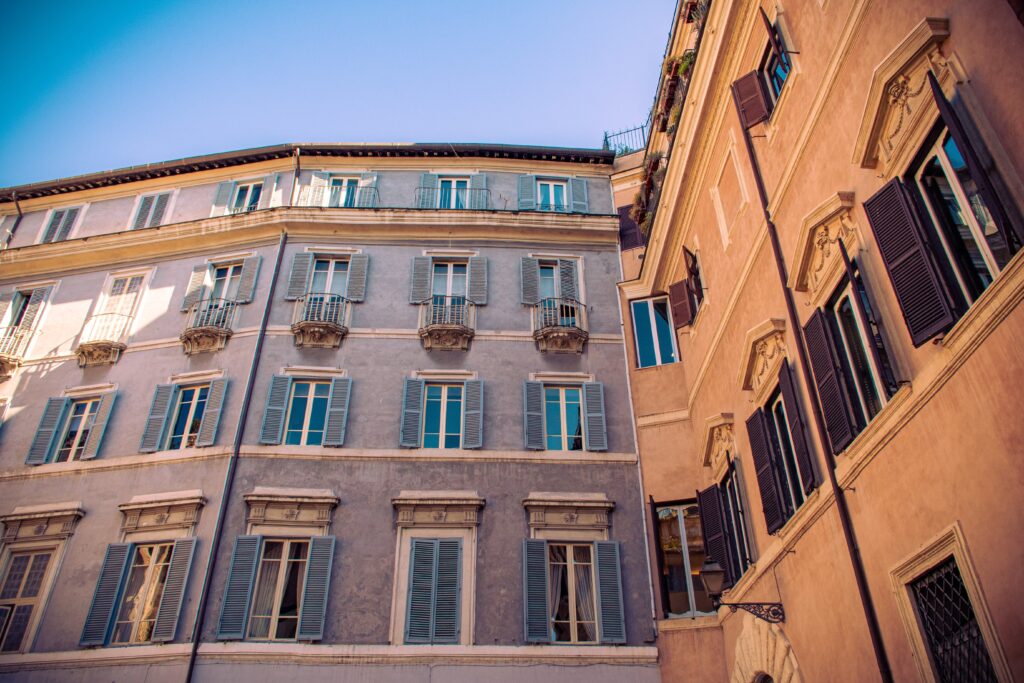
Piazza Margana is a small but charming square that is off the beaten path for most tourists, making it a hidden gem that only the locals seem to know about.
The area around Piazza Margana is also home to a couple of great restaurants and cafes making it a quiet spot to relax and enjoy an espresso.
📍 Piazza Margana, 21
10. Pons Fabricius (or Ponte Fabricio)
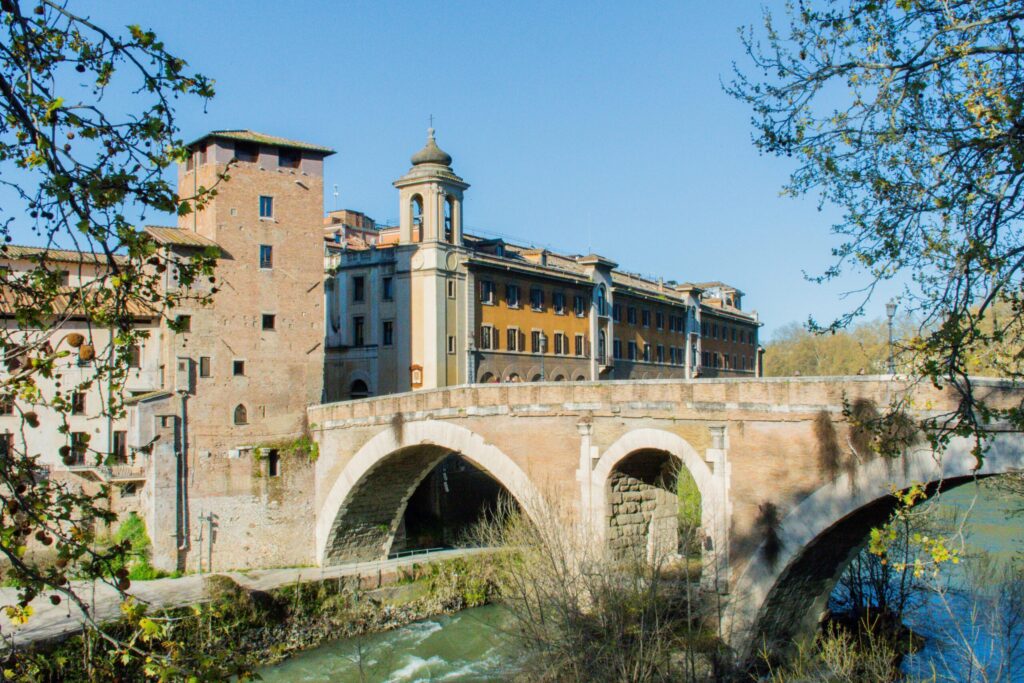
The Pons Fabricius, also known as Ponte Fabricio, is an ancient Roman bridge that spans the Tiber River, connecting the Roman Ghetto to the charming Trastevere neighbourhood.
It was originally built in 62 BC, making it one of the oldest standing bridges in Rome, and it’s still in use today.
The bridge has a unique and striking design, with two arches that rest on a central island and offer beautiful views of the river and the city.
11. Tiber Island (Isola Tiberina)
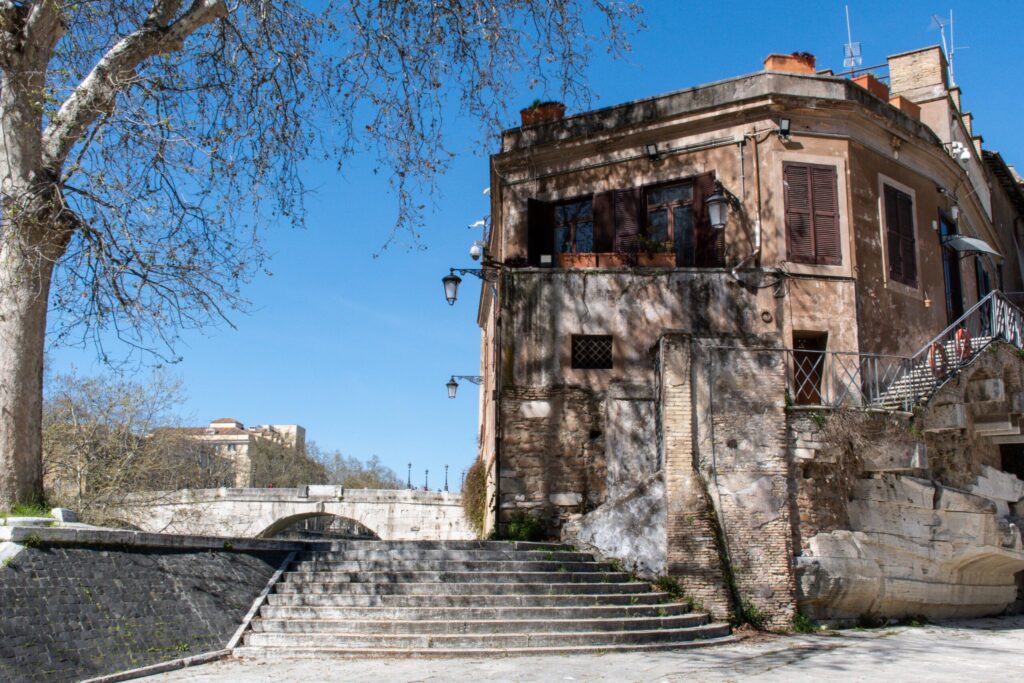
Isola Tiberina is a charming island located in the middle of the Tiber River reached by Ponte Fabricio bridge.
One of the island’s main highlights is the Basilica di San Bartolomeo all’Isola, an ancient church dating back to the 10th century. The church is built on the site where St. Bartholomew was believed to have been martyred, and it houses many important relics and artifacts.
Today, young people come to hang out, families come here for a stroll, and street performers come to play or sing. You’ll find them under the bridges’ arches where the acoustic is incredible and the tune can be heard from all around.
Top Roman Jewish Ghetto Restaurants
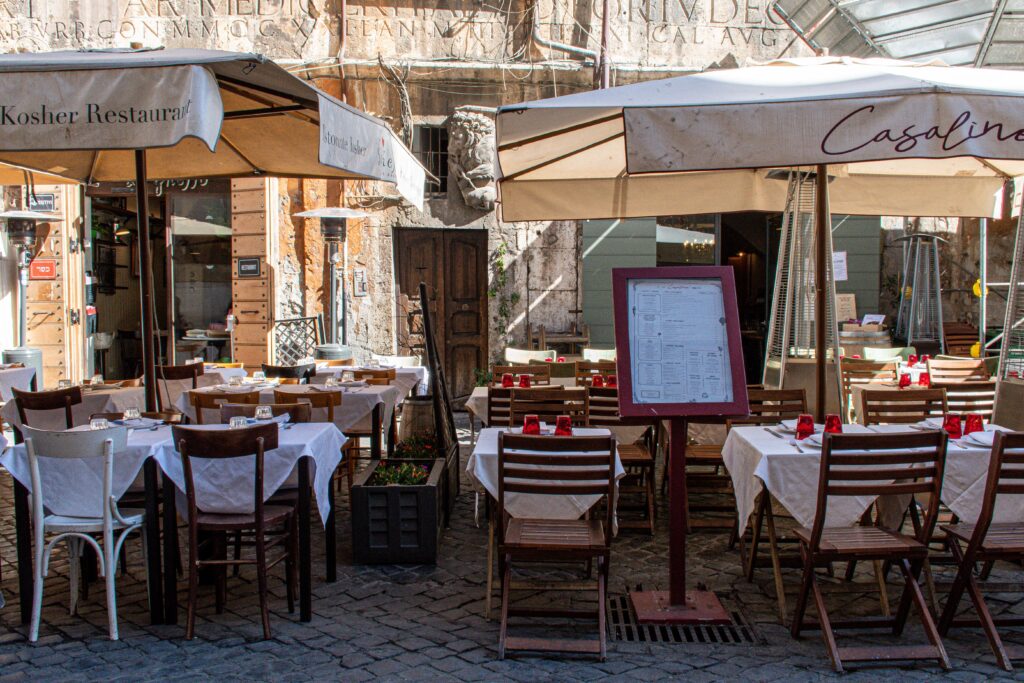
Jewish Ghetto in Rome is home to some of the best restaurants in the city.
If you happen to visit in the spring as I did, don’t miss the Artichoke Festival at the end of March into April, a celebration of the thistle vegetable that is a local specialty.
During the festival, you will see towers of artichokes lining the main street of Via del Portico d’Ottavia. Every restaurant offers a 3 or 4-course fixed menu featuring the star ingredient – the artichoke showing the different ways it can be prepared.
Here are some of the top Old Jewish Ghetto Rome Italy restaurants, each of them perfecting the carciofi alla giudia (fried artichokes) that can be found along Via del Portico d’Ottavia.
- Nonna Betta: this is considered one of the best restaurants in Rome Jewish ghetto neighbourhood, and the reviews are not wrong. I enjoyed my favourite dish here eggplant parmigiana and it was delicious. If you were to only go to one restaurant, this is my top pick.
- Su’Ghetto: I received great service here, as a solo diner and vegetarian, the flirty male server was very attentive and helpful in adapting the menu. I enjoyed the 4-course artichoke menu and 3 out of the 4 choices were divine, the last one was just ok.
- I tried to get in at Al Pompiere, but they were booked solid, next time I’m in Rome I will go there
- I didn’t try these restaurants, although they were recommended to me Taverna del Ghetto, Ba’Ghetto, and Sora Margherita
What to See Near the Jewish Quarter in Rome
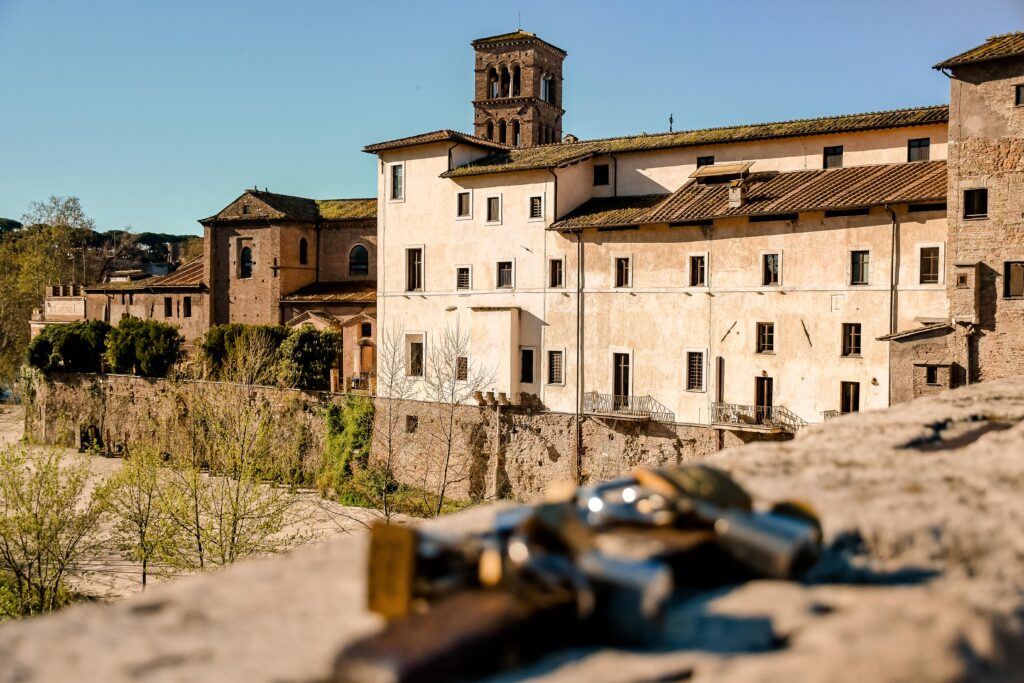
If you’re exploring the Jewish district in Rome, there are plenty of other fascinating sights and attractions to see in the surrounding area.
The first Roman Jewish settlement was in the nearby historic Trastevere neighbourhood, known for its lively atmosphere, winding cobblestone streets and culinary delights in the Trastevere restaurants.
Just a short walk from the neighbourhood, you’ll find the beautiful Piazza Venezia, home to the imposing Altare della Patria monument and the historic Palazzo Venezia.
A little further afield, you can visit the ancient Roman Forum, the iconic Colosseum, and the ancient Centro Storico. Which is at the top of most travellers’ Rome itineraries to see such iconic landmarks as the Pantheon, Piazza Navona, Campo de’ Fiori, Trevi Fountain and the Spanish Steps.
And of course, no visit to Rome would be complete without a visit to the Vatican City, home to the awe-inspiring St. Peter’s Basilica and the world-famous Sistine Chapel.
FAQs About Rome Jewish Quarter
Where is the Jewish Ghetto in Rome?
The Jewish Ghetto in Rome is located in the central neighbourhood of Rione Sant’Angelo, between the Tiber River and the Largo di Torre Argentina.
What is the Jewish Quarter in Rome called?
The Jewish Quarter in Rome Italy is commonly known as the Jewish Ghetto and is one of the hidden treasures of the city known for its ancient history, architecture and delicious cuisine.
Is Trastevere the Jewish Ghetto in Rome?
No, Trastevere is not the Jewish Ghetto in Rome. However, it was the first Roman Jewish settlement and some ancient cultural artifacts remain today.
How far is the Jewish Ghetto in Rome from the Colosseum?
The Jewish Ghetto in Rome is located approximately 2.5 kilometres (1.5 miles) from the Colosseum.
Is the Jewish Ghetto in Rome safe?
Yes, the Jewish Ghetto in Rome is generally considered a safe neighbourhood. As a solo traveller, I found this to be one of the safest areas of Rome.
As a Holidaymaker
The Jewish neighborhood in Rome is a must-visit destination for anyone who wants to experience the rich history and culture of the Jewish people.
I fell in love with its narrow alleyways and its restaurants. It won’t take you long to explore it, so be sure to add it to our Rome itinerary.
For useful tips and ideas for your trip to Italy, check out my Travel Guide. It’s got helpful suggestions and lots of inspiration to make your holiday a memorable one.
If you are looking for a lesser-known neighbourhood to explore, Quartiere Coppedè is a hidden gem that offers unique architecture and a peaceful atmosphere away from the hustle and bustle of the city center.
